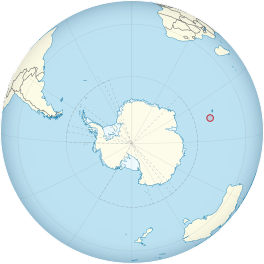
Summary
Allison Glacier (53°04′S 73°24′E / 53.067°S 73.400°E) is an ice stream on the west side of Heard Island in the southern Indian Ocean. Allison Glacier flows from Big Ben massif down to the sea to the south of Cape Gazert.[6] To the north of Allison Glacier is Vahsel Glacier, whose terminus is at South West Bay, between Erratic Point and Cape Gazert. Immediately to the north of Vahsel Glacier is Schmidt Glacier, whose terminus is located between Mount Drygalski and North West Cornice. To the south of Allison Glacier is Abbotsmith Glacier, while Cape Gazert is immediately west.
| Allison Glacier (Heard Island) | |
|---|---|
 Location of Heard Island and McDonald Islands on the globe | |
 Allison Glacier (Heard Island) | |
| Type | ice stream |
| Location | Heard Island Territory of Heard Island and McDonald Islands Australia |
| Coordinates | 53°04′S 73°24′E / 53.067°S 73.400°E |
| Thickness | approximately 55 meters |
| Terminus | immediately south of Cape Gazert |
| Status | Retreating[1][2][3][4][5] |
|
Discovery and naming
edit
Allison Glacier was named after Ian Allison, an Australian glaciologist who carried out glaciological research in this area in 1971 for the Australian Antarctic Division during the French-Australian Antarctic Expedition.[6] See also editReferences edit
Further reading edit
External links edit
53°04′S 73°24′E / 53.067°S 73.400°E | |


